Vertical Blinds Home Shopping Guide
Sam Minneti • August 7, 2017
Finding the right verticals to elevate your view Window blinds and shades come in hundreds of styles, makes and models. Blinds, shades, shutters, drapes and curtains each have their own unique purpose and style depending on your needs. Choosing which window coverings are best for your home can be as big of a decision as …
The post Vertical Blinds Home Shopping Guide appeared first on Elevated Views.
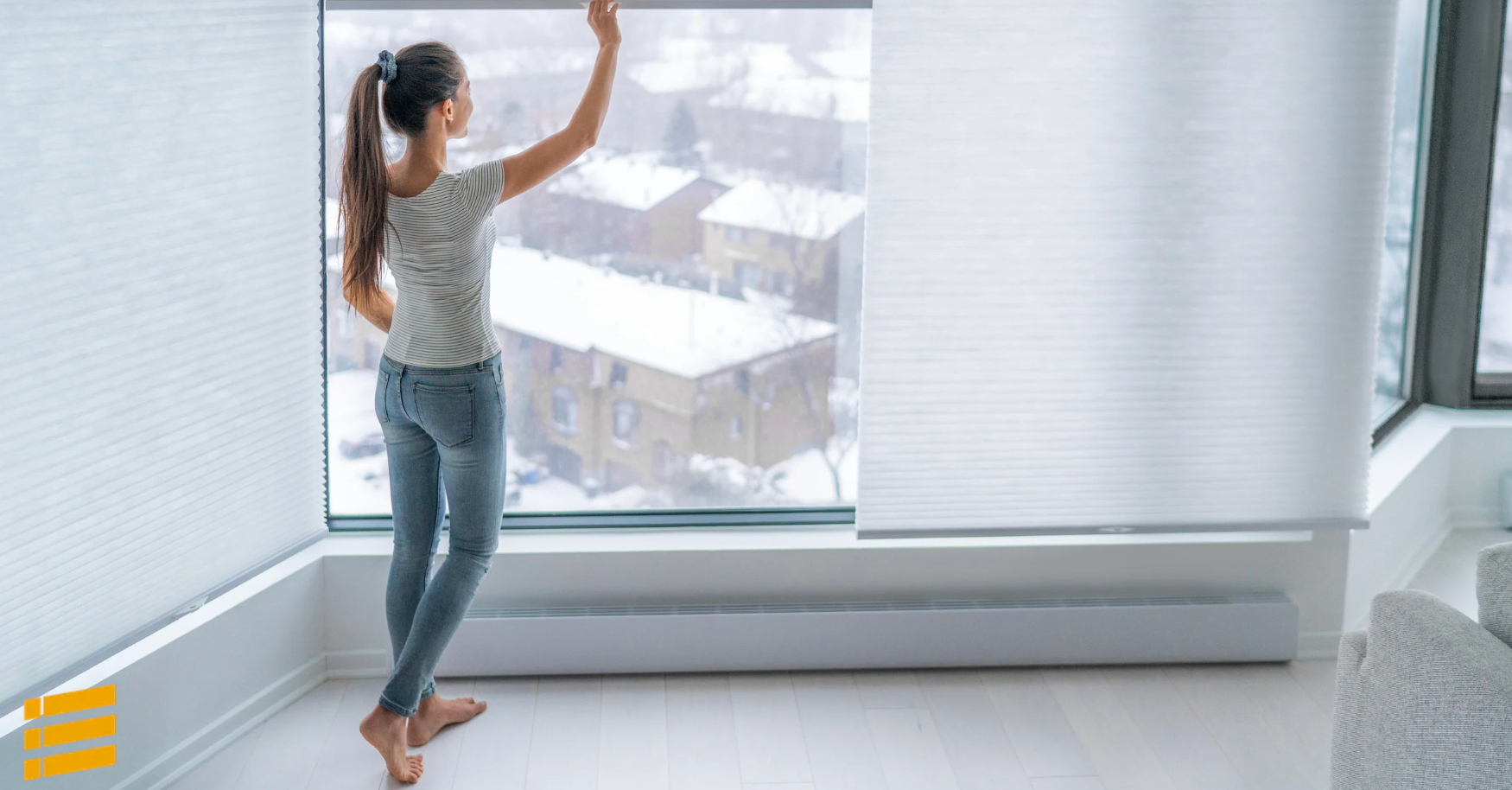
Winters are chilly and harsh, especially in Colorado! Older windows are often leaky and let in cold air, making it hard and more expensive to keep your home warm during the colder months. But you don’t need to replace old windows to help keep your home insulated and warmer this winter. You just need the right window covering! So let’s take a look at the best window treatments to keep your home warm and comfortable this winter. Cellular Shades Cellular shades, also known as honeycomb shades, are the most insulating and energy efficient window treatments on the market. The pockets of fabric trap both hot and cold air, making them the perfect window treatment for year-round comfort in your home. Today’s modern cellular shades aren't what you see in your grandparent’s home. These chic and stylish shades come in a variety of options, such as fabric and color. But you can also select the number of pocket layers, from one to three layers of pockets. The more layers of pockets, the more insulating your cellular shades will be. We also recommend opting for cordless, which will keep your pets and small children safe. Fabric Shades with a Lining If you love fabric shades but need a little extra insulation, we recommend choosing your favorite style fabric shade, such as roller or roman shades, and adding a blackout, solar, or other lining to the back. This extra layer of fabric will provide an additional layer of insulation from both hot and cold air seeping in through your windows. What we love about fabric shades is the huge number of options you have to make your window treatment uniquely you! There are seemingly endless options when it comes to fabric material, color, and patterns. Plus, you simply can’t go wrong with something as classic as a roman shade! Interior Shutters Interior shutters are not only a great investment in your home, but also provide great insulation from the elements. If you’ve read any of our previous articles, you’ll know that home buyers love interior shutters and are willing to pay more for them. That means they are the only window treatment that actually adds value to your home. So while interior shutters can cost you more up front, in the long run, they offer a return on the investment that other window coverings just can’t offer. Because interior shutters are installed to your window frame, it helps to minimize gaps that allow hot and cold air to seep in. Need to keep your home warm during a cold night? Or even block the hot summer sun? Simply close the slats of your shutters to help insulate the inside of your home from hot and cold air. Shutters come in a variety of options, including real wood (which offers additional natural insulation from extreme temperatures), faux wood, and a variety of colors and stains. You can also select different options for operating your shutters, such as a visible tilt bar or hidden tilt mechanism. If you have young children, we also recommend adding a lock to your interior shutters to keep children from swinging them open and hurting themselves. Stay Cozy This Winter Now is the time to start planning for the cold winter months in the Pikes Peak region! Elevated Views offers a friendly, no-pressure custom window covering service! We are here to help make the process of selecting your new window treatment fun and simple, and won’t pressure you to buy above your set budget! Schedule a free in-home consultation and quote today and we’ll bring the showroom to you!
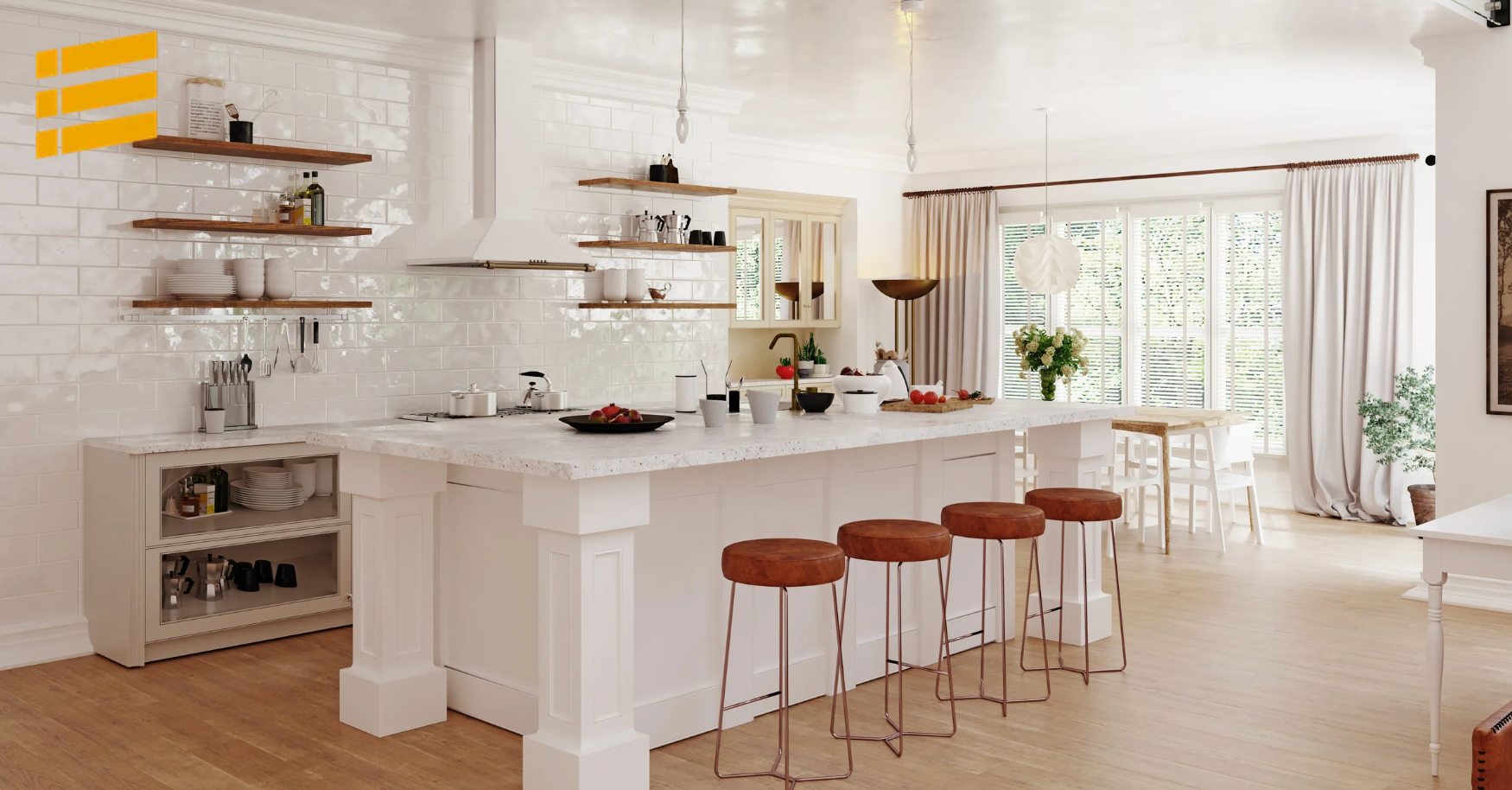
Kitchens can pose a unique struggle when it comes to selecting the right window coverings for the room. It’s the room where everyone gathers when you have a get-together or celebration and it’s where a lot of messy and fun memories are made. But that doesn’t mean you can’t have chic and stylish window treatments in your kitchen! Let’s take a look at some of our favorite window coverings that are perfect for your kitchen. Window Treatments You Should Never Install in Your Kitchen Before we get into our favorite window treatments for kitchens, let’s talk about the ones you should never install in a kitchen. The first treatment we do not recommend installing in your kitchen is real wood treatments. This includes wood blinds, wood shutters, and bamboo or other natural wood shades. The high humidity in kitchens from washing dishes and cooking can warp and discolor your natural wood shades. Plus, hot grease can burn and stain them too. The second treatment we do not recommend installing in your kitchen is fabric shades, at least not near your stove! Grease splatters can stain your fabric treatments. So don’t cry over spilt milk and keep the fabric shades to your breakfast nook window. Now, let’s talk about the best window coverings for your kitchen! Best Value: Cordless Faux Wood Blinds Blinds are the most popular option when it comes to window treatments because you get full control over light filtering and privacy. So if you love the look of real wood blinds, then faux wood blinds are for you! Faux wood, also called composite, gives you the look and feel of real wood at a reasonable price point. But what makes it even better is that the composite material is humidity resistant and easy to clean. You can even soak dusty and greasy faux wood blinds in your bathtub for a deep clean! Best Investment: Faux Wood Shutters Interior shutters are highly desired by home buyers and they are willing to shell out more to have them. That means interior shutters are the only window treatment that actually add value to your home, making them an incredible investment! Just like blinds, shutters come in real and faux wood options. Installing faux wood shutters in your kitchen is a great way to get privacy and light filtering control all while having a window covering that stands up to the mess and is really easy to clean. Best for Sunny Kitchens: Roller Shades Roller shades come in a variety of materials, including vinyl. This durable material is great for kitchens because it is low maintenance, moisture resistant, and is easy to clean. These classy shades come in a variety of colors and are known for their clean lines and modern appeal. These are especially perfect if you have a bright and sunny kitchen. Simply pull down your roller shade for relief from the sun’s bright and hot rays. Honorable Mention: Roman Shades We wanted to include one fabric option for those with larger kitchens that include breakfast nooks and other kitchen windows not right at your stove. Roman shades are a classic option and come in a variety of options. Not only do you have endless color and pattern choices when it comes to fabric, but you can also decide between different pleat styles that fit both modern and traditional home decor styles. Be sure to check out the cleaning directions for the fabric if you know your breakfast nook can sometimes get a little messy. Having a fabric that can be spot cleaned is a must for messier breakfast nooks. Elevate Your Kitchen Today! Are you ready to elevate your kitchen’s style? Elevated Views understands that the right window covering can change your entire point of view and amp up your home’s unique style! Our experts help you from start to finish, from measuring your windows, selecting the right treatments for your needs and budget, plus installation! Schedule your free in-home consultation and quote today and we’ll bring the showroom to you!
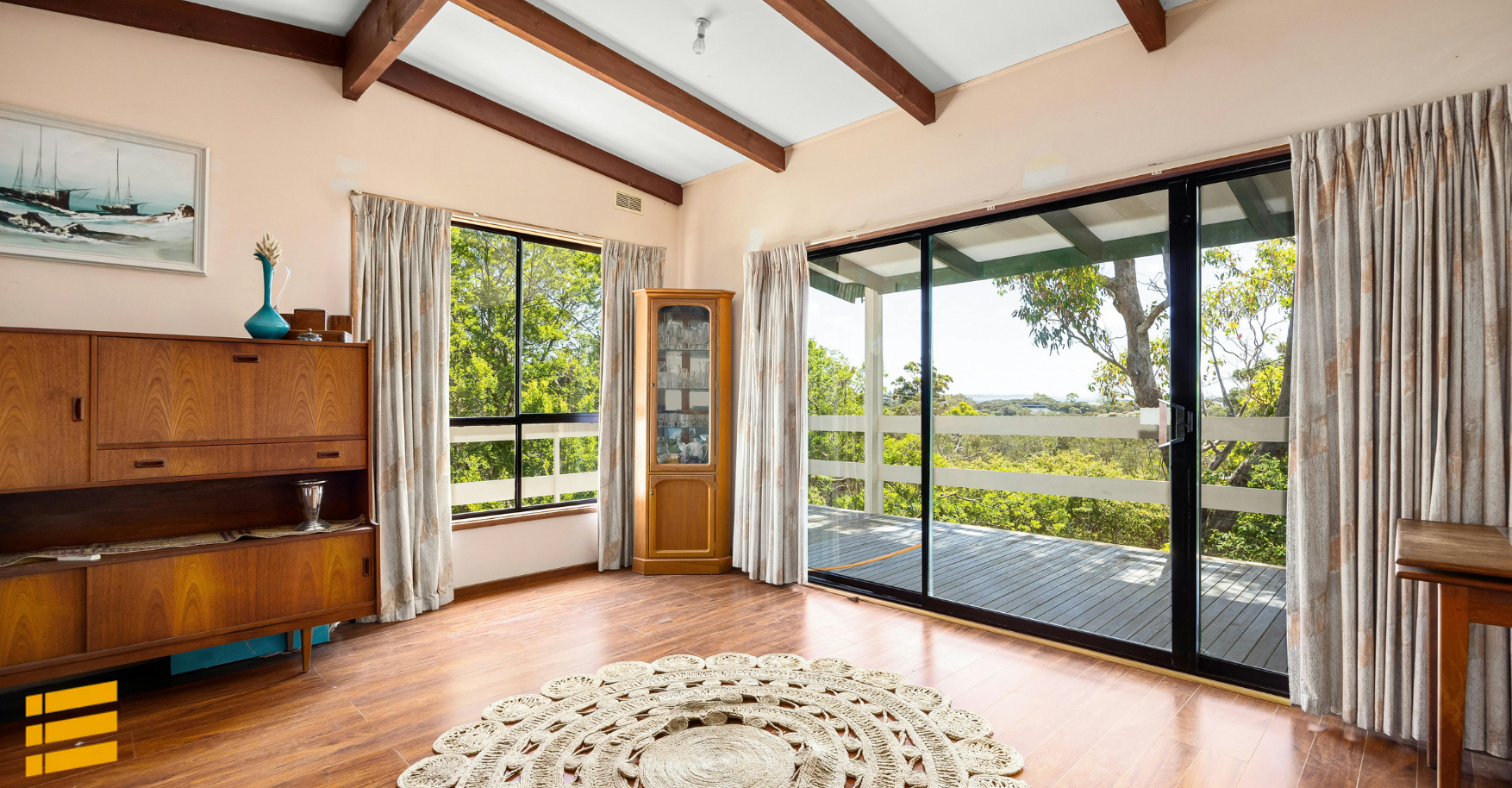
Sliding glass doors: many homeowners have a love-hate relationship with them. They are great for opening up our world to our backyards, but that means they get a lot of traffic. It also means that any window covering you put on your sliding glass door will be subject to that high traffic. So what is the best window treatment for sliding glass doors? We’ll dive into our top four window coverings and why opting for custom window treatments is the better way to go. Why Custom Window Coverings are Better for Sliding Glass Doors You want a window treatment that is going to stand the test of time. Custom window coverings are made from high quality materials that can not only stand up to more use and high traffic, but they also stay looking nicer for longer. So while custom may be a bit more expensive up front, in the long run, you’ll get a better value. Vertical Blinds If you like the utility of blinds, then you’ll love vertical blinds for your sliding glass door! There’s a reason that blinds, and vertical blinds by extension, are the most popular window covering. The louvered design allows for full light and privacy control. Vertical blinds are the perfect application for large windows, such as sliding glass doors. The housing that holds the mechanism is more lightweight, ensuring that your window treatment won’t fall down. Vertical blinds also slide to the side in a neat little stack when you want to access your door, keeping them out of the way and protected from dogs and curious little hands. Like their horizontal sister, vertical blinds come in a variety of materials, including composite, as well as colors that allow them to match any style. And since they are cordless, you don’t have to worry about pets or small children getting caught up in dangerous cords. Vertical Panels Vertical panels are the bougie cousin to vertical blinds. The wide panels make a statement and catch the eye! They have the same functionality as vertical blinds, where you get control over the angle of the panels to allow for more light filtering or privacy. The housing is also lightweight, making them perfect for sliding glass doors or a large wall of windows. When you are ready to access your sliding glass door, just push your panels to the side. Vertical panels come in a variety of materials and colors to match your personal style. They work well in modern style homes, but look fantastic in more traditional styles as well. Sliding Shutter Panels Love the look of interior shutters? Already have interior shutters on your windows but not quite sure what to do with your sliding glass door? Don’t worry! Many brands offer coordinating sliding shutter panels. These two louvered panels slide along a track on your sliding glass door. You get control of the angle of the slats for full light filtering and privacy control. Then to access your door, just slide one of the panels to the side. Sliding shutter panels come in both wood and faux wood as well as a variety of colors. Need to custom match the stain of the wood to existing wood in your home? That can be done too! We recommend that if your sliding glass door is in the kitchen or other higher-humidity room, that you install faux wood sliding shutter panels. It’s also important to note that with sliding shutter panels, one half of your sliding glass door will always be covered in panels, even when you slide one to the side to access your door. Vertical Cellular Shades Finally, if the room with your sliding glass door gets a lot of sun, or you just need more insulation on your window, we highly recommend vertical cellular shades. The pocketed design of these shades traps both hot and cold air, helping to keep the temperature inside your home more regulated. Like their horizontal counterpart, cellular shades offer savings on your energy bill! When you are ready to access your door, just slide this shade to the side. Vertical cellular shades aren’t your grandmother’s cellular shades! This modern version comes in a variety of fabrics and colors to match your unique style, fitting in well with both modern and traditional home styles. Elevate Your View Today Are you ready to elevate the view through your sliding glass door? Elevated Views offers plenty of styles and options to meet your needs and budget! We help you from start to finish, from measuring your sliding glass door, to helping you select the best options, to installation! Schedule your free in-home consultation and quote today and we’ll bring the showroom to you.
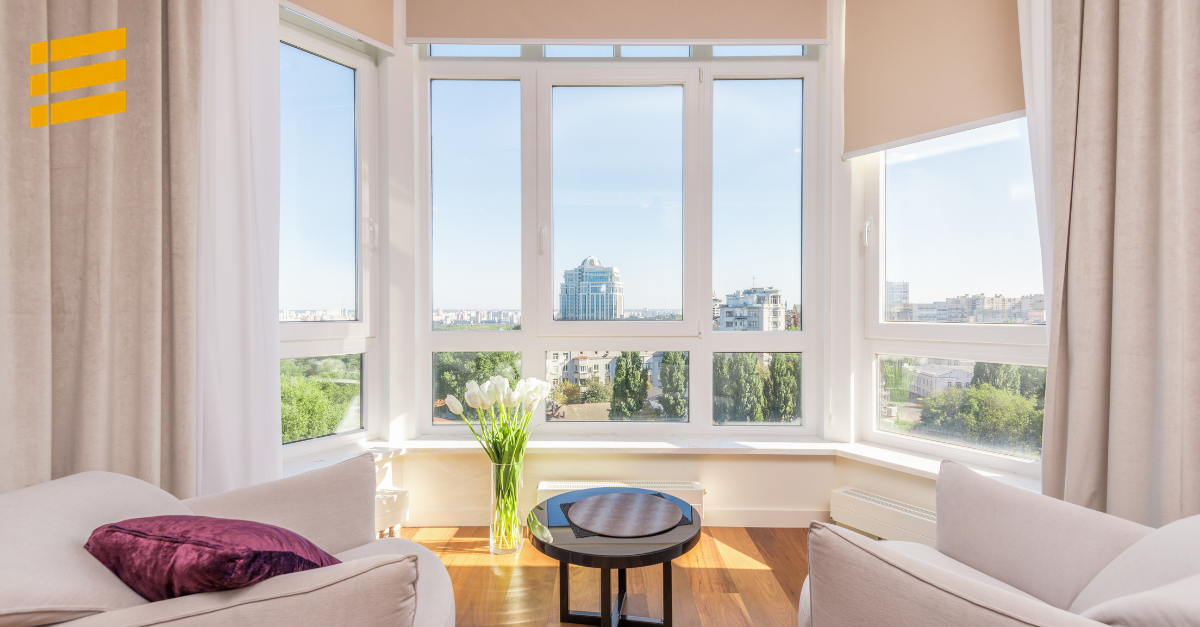
Are you tired of the same old boring window treatments? Are you ready to make a change and upgrade your home’s style? While standard white blinds are a great blank canvas, your windows are actually a great place to play with fun colors, different materials, and new styles. And custom window coverings really open up the door to all of these materials, colors, and more. Here are our favorite ways to elevate your space with your window treatments! Bold Colors Bold hues can add a pop of color to plain walls and draw the eye in. If you are tired of white or grey, opt for fabric shades in bright and bold or deep hued colors. Roman shades in navy blue linen are perfect for coastal themed homes, or for modern spaces, try persimmon hued roller shades for a fun pop of color. Bold Patterns If playing with color isn’t enough, try playing with patterns. Fabric shades offer a variety of patterns, from modern abstract patterns to bold paisley. It can also give you the opportunity to incorporate more than one color into your shades, if you are bold enough to try! Have a shabby chic bedroom? Try out a floral or toile pattern in your chosen hues. For an industrial home, try a “grungy” abstract pattern that mimics painted metal. Black Shutters Most people opt for white, grey, or wood stained shutters. But have you considered black shutters? Nothing makes more of a statement than black window coverings! These window treatments are a favorite of home buyers and they are willing to pay more for a home that has them. So investing in shutters means investing in the resale value of your home. Just imagine that curbside appeal and the double takes you’ll get from neighbors when you have black interior shutters installed! Natural Shades Instead of playing with color or patterns, consider playing with texture and material. Natural shades are made of grasses or woods like bamboo. Their natural beauty brings the outdoors in and amps up the texture on your walls. These shades roll up into a neat stack when open, and provide great privacy when closed. They also look great in modern and coastal styled homes! Vertical Panels Vertical panels are the bougie cousin to vertical blinds. These wide panels make a statement and provide a sophisticated and elevated look to your home. Vertical panels are perfect for sliding glass doors and large windows or a wall of windows. They come in a variety of materials and colors to match your personal taste. And if we may be so bold, might we suggest a fun pop of color? Sheer Shades Sheer shades, sometimes referred to as zebra shades, have alternating veins of opaque and sheer materials. They operate much like regular blinds, but are made of fabric for a softer touch. Because they are a little different from traditional blinds, they’ll turn heads and will receive lots of compliments from guests! Their elegant style is perfect for both modern and traditional homes, and they come in a variety of colors and fabrics to meet your unique style needs. Have a large window? Try vertical sheer shades! Dramatic Drapes Finally, if you love your basic white or cream blinds, shutters, or cellular shades, but want to layer on the drama, try adding on custom drapes in fun and bold colors or patterns! Custom drapes add a soft and luxurious touch to your walls. But because the fabric options are nearly endless, you can choose from black velvet to red and white stripes and everything in between! Upgrade and Elevate Your Windows Today! Are you ready to make a statement with your windows? Elevated Views is here to help you upgrade your view. We offer a wide selection, including blinds, shutters, shades, and more! Our custom window treatments are made with quality in mind, so you’ll have the peace of mind knowing your investment will stand the test of time. Schedule your free in-home consultation and quote today and our experts will measure your windows and bring the showroom to you!
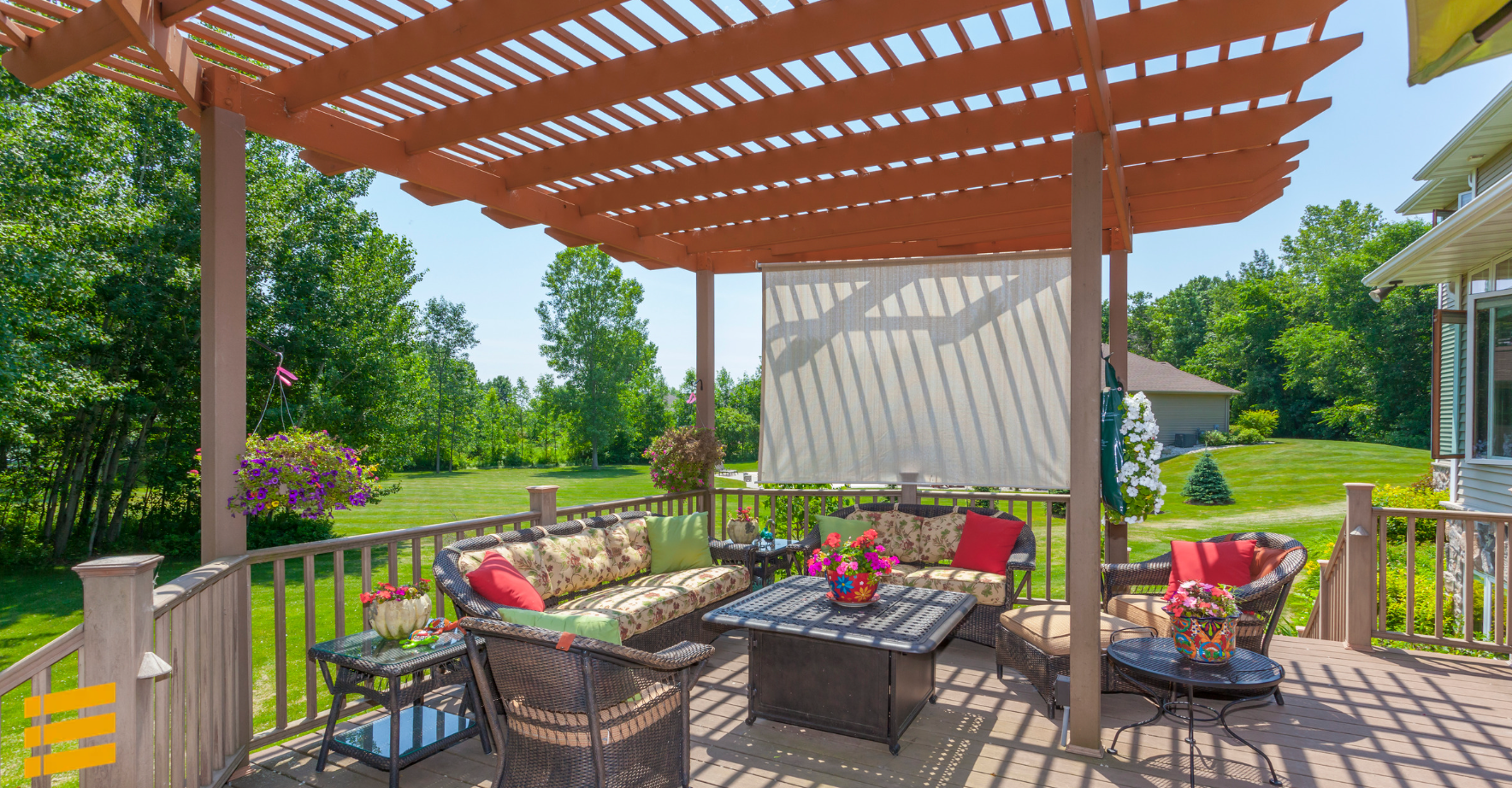
The summer season is starting to heat up and that means it’s time to consider how to keep your home and patio cooler! Patio shades can not only help extend your living space during the warmer months, but it can also provide better temperature regulation inside your home, resulting in energy savings. Here are our top window and patio shades to help you stay cooler this summer. Patio Shades Patio shades are made from solar screen fabric and provide a simple yet elegant solution for shading your patio or porch from the harsh summer sun. These shades roll up into a neat stack when not in use, but when drawn, provide privacy plus protection from glare, heat, and harmful UV rays. This not only helps protect you from the elements, but your patio furniture too, increasing their longevity and protecting your investment. Patio shades have a wide selection for customization, including fabrics, hardware, and finishing options. Exterior Sun Shades Exterior sun shades are like sunglasses for your windows! They are installed on the exterior of your home’s windows and doors to help block heat, glare, and UV rays, keeping your home cooler and your energy bill down. Exterior sun shades are one of the most effective ways to decrease heat gain in your home because they stop the sunlight and heat before it even enters the glass of your windows, blocking up to 97% of heat and UV rays! Simply control the temperature in your home by rolling down these shades when needed, and up when you don’t. Retractable Insect Screens Sun and heat can chase us indoors, but so can insects! Keep your outdoor spaces more comfortable by getting retractable insect screens, which keep out critters and bugs when you want to enjoy your covered patio. These retractable screens roll up and down, allowing you to enjoy the open air at dusk without all the mosquitos or moths! These screens can also be added to movable glass walls and garage door openings. Sail Shades Sail shades or triangle shades are strong pieces of solar fabric that are mounted to your home or poles to shade a patio, play equipment, sandbox, or other spots you want to keep cooler around your yard. Sail shades, just like solar shades, come in a variety of fabrics and sizes to help you get the perfect look. Why Custom is a Better Investment Custom window and patio shades are a much better investment in your home! While their upfront cost may be a bit more than big box store options, custom shades are made of higher quality materials that will better withstand the extreme Colorado weather. Elevated Views is ready to help you create your oasis for this summer! Schedule a free in-home consultation and quote and we’ll bring the showroom to you!
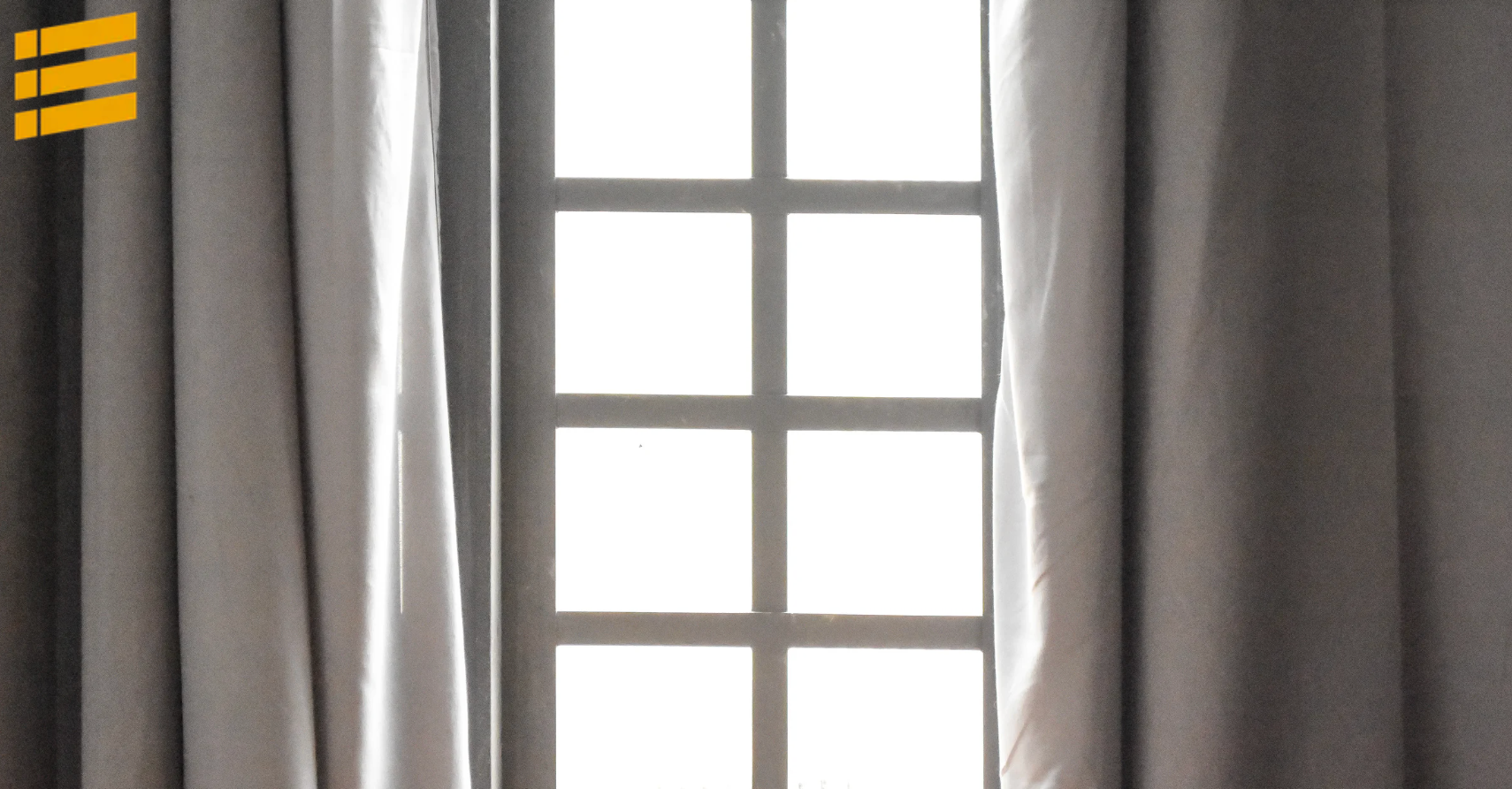
We know times are tight right now, but privacy isn’t a luxury–it’s a necessity! So if it’s time to replace your window treatments, you’ll want to check out our top three favorite affordable window coverings. Why Custom is More Affordable than Big-Box Options A lot of us have a tendency to only consider the short-term cost. When it comes to investing in your home and your privacy, it’s important to actually consider the long-term cost. Big box store options can be really tempting. Blinds are blinds, right? Wrong! Custom window coverings are actually more affordable than big-box options. Here’s why: Custom window treatments are made from high-quality materials and are made to last. Custom window treatments are made to fit your exact window size, meaning you won’t have to worry about someone knocking into your window treatment and damaging it. Because custom window treatments are made to fit your window, they are also more energy efficient, giving you bigger savings on your energy bills! You could buy some big-box store window coverings, but keep in mind that they won’t be made to last and they won’t be made to fit! You’ll just end up purchasing new window treatments five to ten years down the road. Or you could buy quality custom window coverings that actually stand the test of time and are more energy efficient. Our Top 3 Favorite Affordable Window Treatments Now that we have your attention on why custom is more affordable in the long-run, let’s take a look at our top three favorite window treatments. Custom Blinds Blinds are the most loved window treatment around and it’s not hard to see why! They give you full light and privacy control! We offer a variety of custom blinds, including faux and real wood options. We recommend going cordless for a clean look and for homes with pets or small children. Custom Shades Looking for a soft fabric treatment instead? There are a variety of custom shades to fit your style and needs. Choose from a variety of fabrics, textures, patterns, and colors to add a soft touch or a statement look. We recommend adding a solar or blackout lining for additional energy savings. We offer: Cellular shades Solar shades Roller shades Roman shades Pleated shades Sheer shades Natural shades And more! Custom Faux Wood Interior Shutters Now we know what you are thinking, but yes, interior shutters can be affordable! What we love about interior shutters is that they actually add value to your home. They are so desirable by home buyers, that they are willing to pay more for them. That makes interior shutters an incredible investment in your home and future! To keep costs down, opt for faux wood (composite) shutters, which are easier to keep clean too! We’ll Bring the Showroom to You! Ready to update your window coverings to an affordable custom option? Elevated Views offers no-pressure design help because we want you to choose the right window treatment for your style and budget. Schedule a free in-home consultation and quote today and we’ll bring the showroom to you!
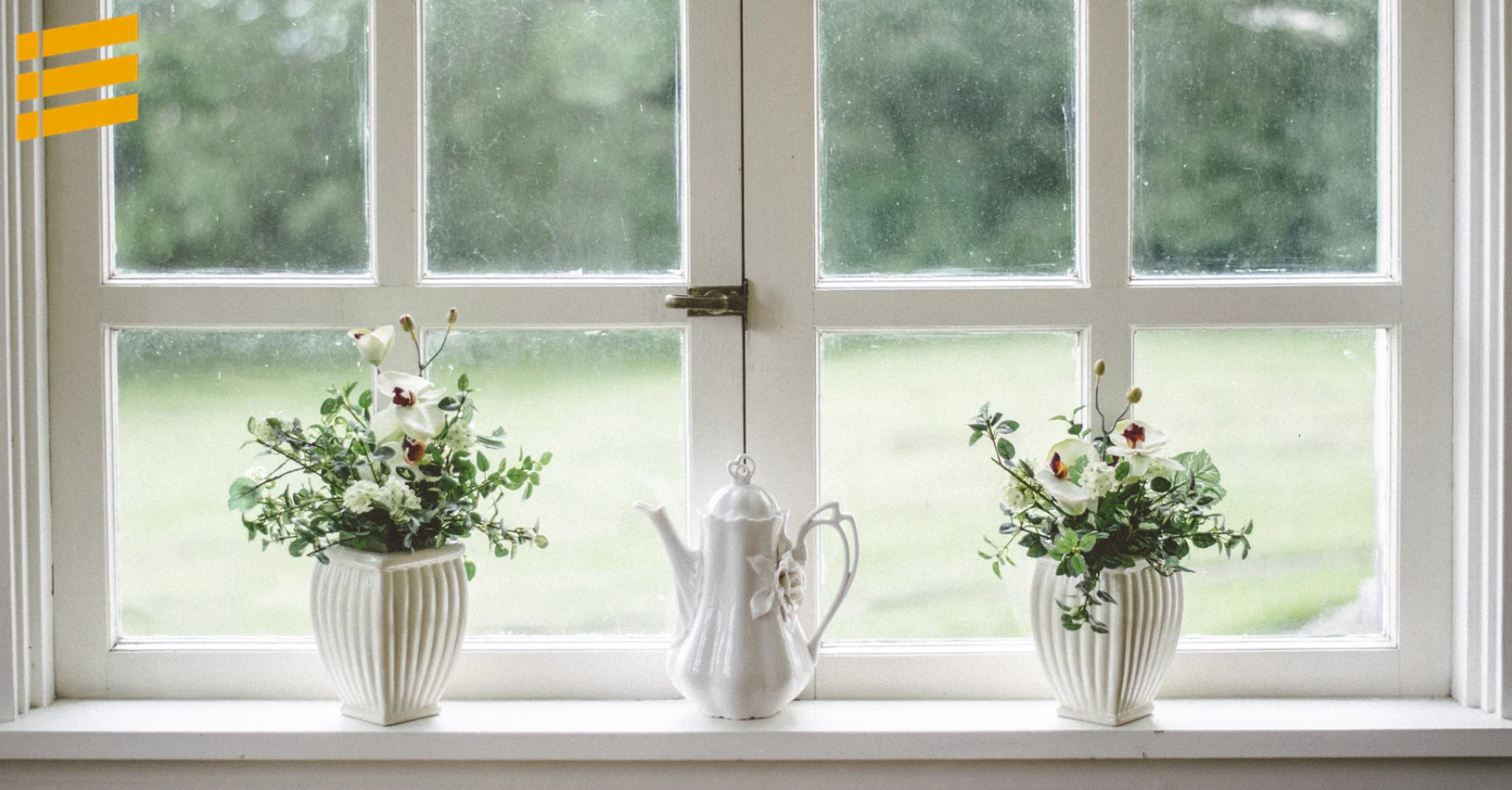
The dog days of summer are just around the corner and we can already feel the heat! And while we can’t all afford to crank up the AC or replace our windows, there are some window treatments you can upgrade to this spring that will bring energy savings and keep you cool and stylish for the summer. Cellular Shades These aren’t your grandmother’s cellular shades! Today’s cellular shades, also known as honeycomb shades, are sleek and stylish. Their pocketed design traps both hot and cold air, keeping your home’s temperature more regulated year round. In fact, cellular shades are the most energy efficient window covering out there, helping you see reduction on both your gas and electricity bills. Cellular shades come in a variety of materials, textures, and colors to match any home decor style. You can also select from one to three layers of pockets; the more layers of cells, the greater your energy savings! We also recommend opting for cordless for a more clean look, or for homes with pets or small children. Interior Shutters Make an investment in your energy bill and your home with stylish interior shutters. Love the look and functionality of blinds but want something a little more energy efficient? Look no further than shutters. Because this window treatment is mounted to your window casing, it minimizes the amount of gaps that hot and cold air can seep through, helping you stay more comfortable year round. Plus, this window treatment is so desirable that home buyers are willing to pay more just to have them in their next home. So while interior shutters are the most expensive option, they are an incredible investment! These traditional window treatments aren’t just for traditional-styled homes. Shutters come in a variety of options that look great in modern and traditional homes. Whether you opt for real wood or faux wood, white or black, you can’t go wrong with interior shutters. Exterior Shades Have what you need for window treatments on the inside of your home? Then consider exterior shades for the outside of your home! Not only do patio shades make your patio more enjoyable during the hot summer months, but it can also provide additional protection for the inside of your home from summer heat and glare. Or try exterior solar window shades, which utilize a European concept by mounting outside your windows and blocking up to 97% of heat and UV rays. Control the temperature by rolling down exterior solar sun shades on hot days and rolling the shade up when you don't need it. There are plenty of options for patio and exterior solar shades for your home to help you create your indoor and outdoor oasis this summer. You can even add on retractable insect screens that help keep the bugs out when you want to spend time on your patio! Work with the Window Covering Leader Elevated Views understands the brutal Colorado seasons. We also believe that the right window covering can literally change your point of view! We are a locally-owned business in the Pikes Peak region, helping Coloradoans just like you make selecting your next window covering simple and fun! Schedule a free in-home consultation and quote and we’ll bring the showroom to you!
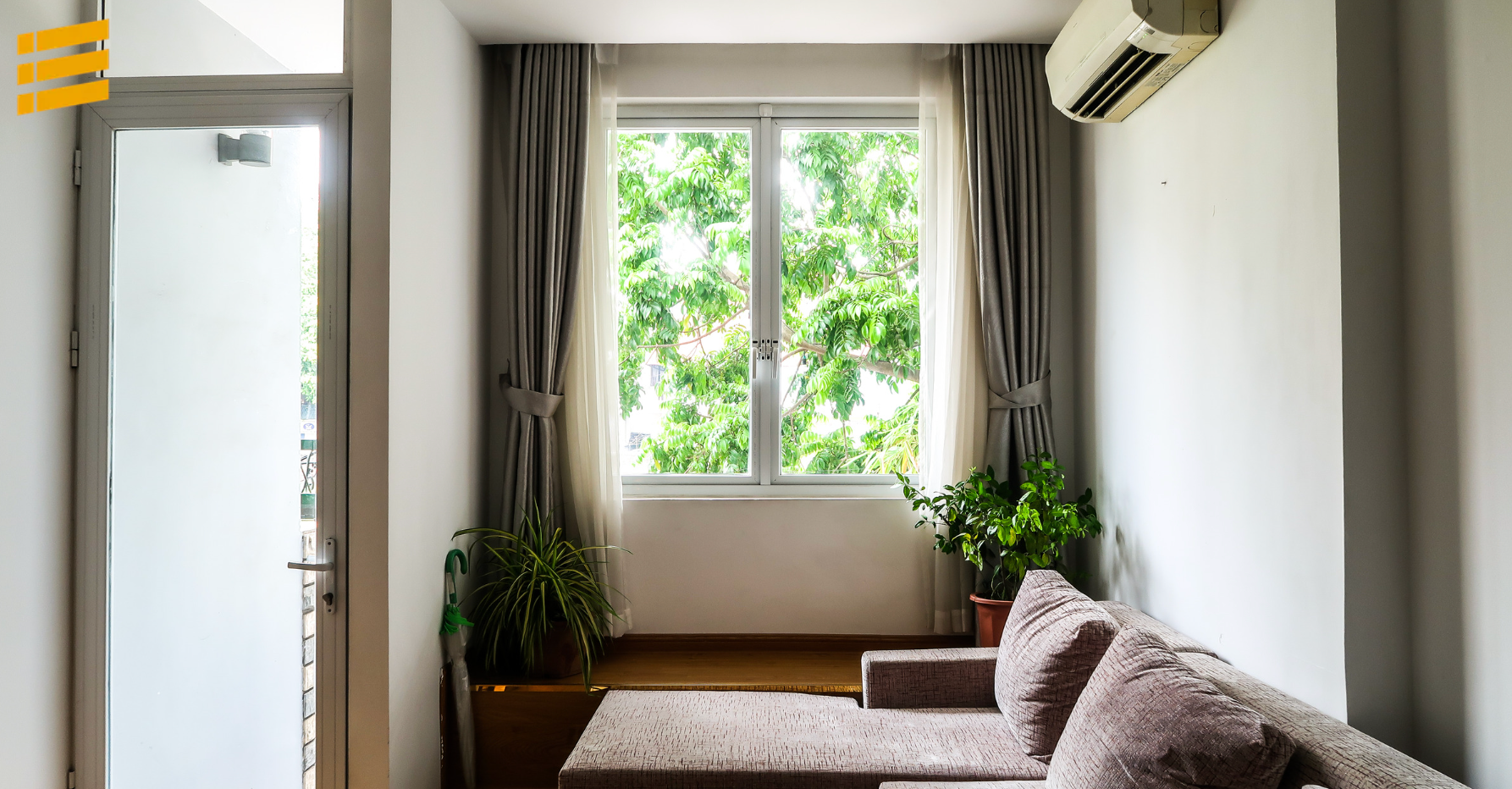
Whether you are new to buying window treatments or not, all of the options and decisions to be made can be overwhelming. One of the first decisions you’ll need to make is whether your window covering needs to be an inside mount or an outside mount. What’s the difference, and which is right for your window and needs? Keep reading to find out! What is an Outside Mount for Window Treatments? Most people who have hung their own blinds are probably familiar with this method of mounting a window treatment. An outside mount is when you hang your window covering above the window frame (opening) on the wall or trim. With this application, the window treatment is slightly wider than your window. What is an Inside Mount for Window Treatments? An inside mount is when the window covering is hung inside the window opening, or frame. The window treatment brackets are either screwed into the top of the window frame, or on either side of the opening. Because the window treatment is the same width of your window opening, this provides a clean, finished look and doesn’t cover decorative moulding. When and Why Should I Choose an Inside Mount? We almost always recommend an inside mount. However, your window frame will need to have enough depth to hang your window treatment. Most inside mounts require a few inches of window depth to anchor the brackets on. It’s important to check the specs on your selected window treatment before purchasing to see what these depth requirements are. By hanging your window treatment this way, your treatment will stay out of the way, safe from getting knocked around by kids or pets running past, or the errant elbow. We’ve all had an accident with a bent blind slat, and while they can be replaced, it’s a task that can take a little bit of time. When and Why Should I Choose an Outside Mount? We recommend an outside mount for your window treatment when the window frame is too shallow to accommodate an inside mount, or when there are obstructions, like a window crank, security sensor, or other object that prevents your treatment from lowering all the way. Having decorative trim or tiling on the inside of the window frame could get damaged by an inside mount, also making outside mount the more ideal option. Other benefits that an outside mount provides is less gaps that cause light leaks when your window covering is fully closed. This can be ideal for nurseries, bedrooms, or media rooms as it provides better room darkening. An outside mount can also camouflage odd-shaped or off-center windows. You can also hang the window treatment further above the window to give the illusion of taller windows. Best of Both Worlds for Layering! Some home owners love to layer their window treatments. If you have enough depth, doing an inside mounted roller shade with an outside mounted roman shade can provide a luxe look or offer additional room darkening or blackout capabilities. Call the Experts in to Measure Your Windows Getting the right measurements for your window is the most important step. Let our experts help you get the perfect measurements, plus help you select the right window covering for your needs and budget! Schedule your free in-home consultation and quote today and we’ll bring the showroom to you!

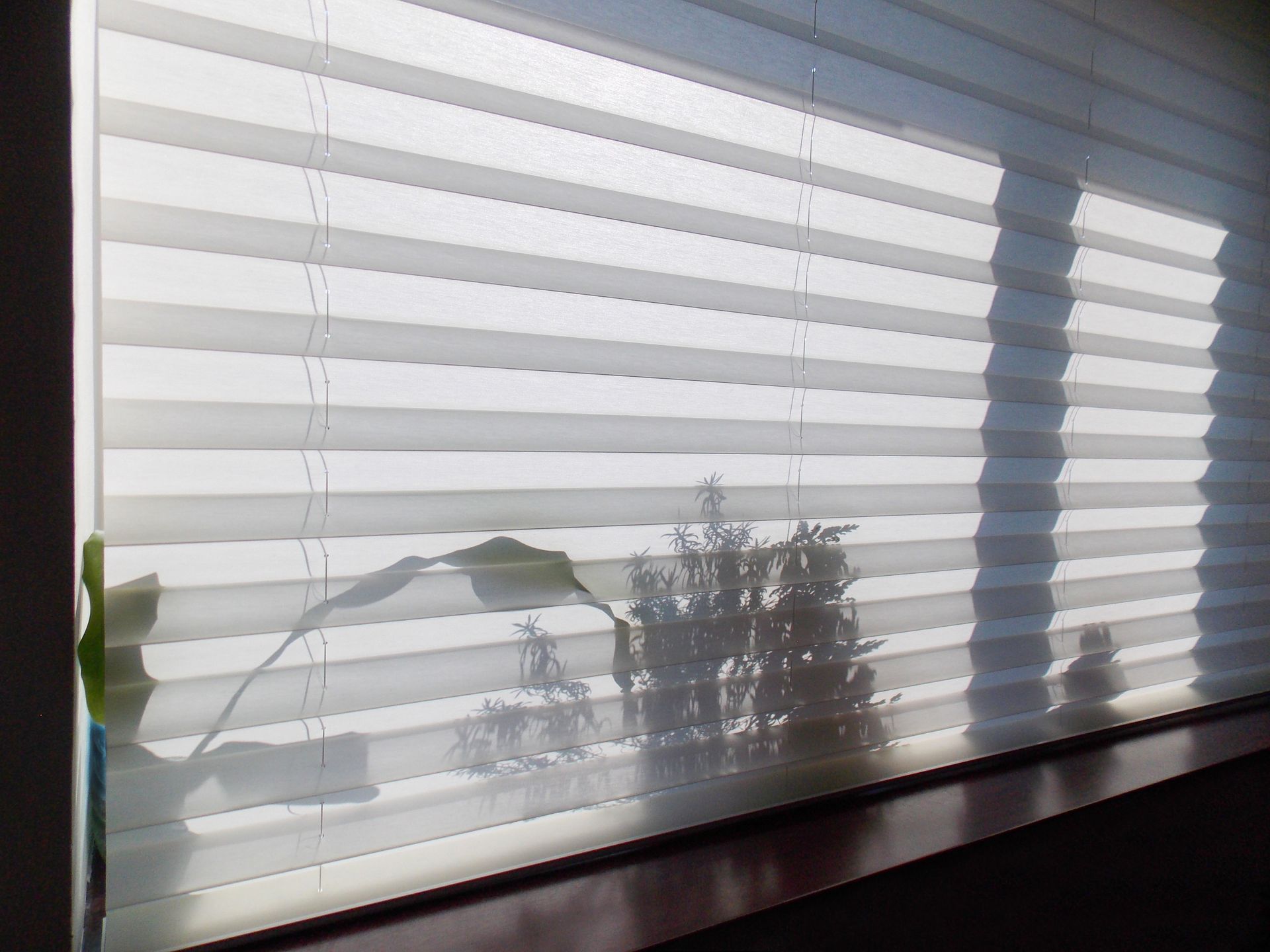
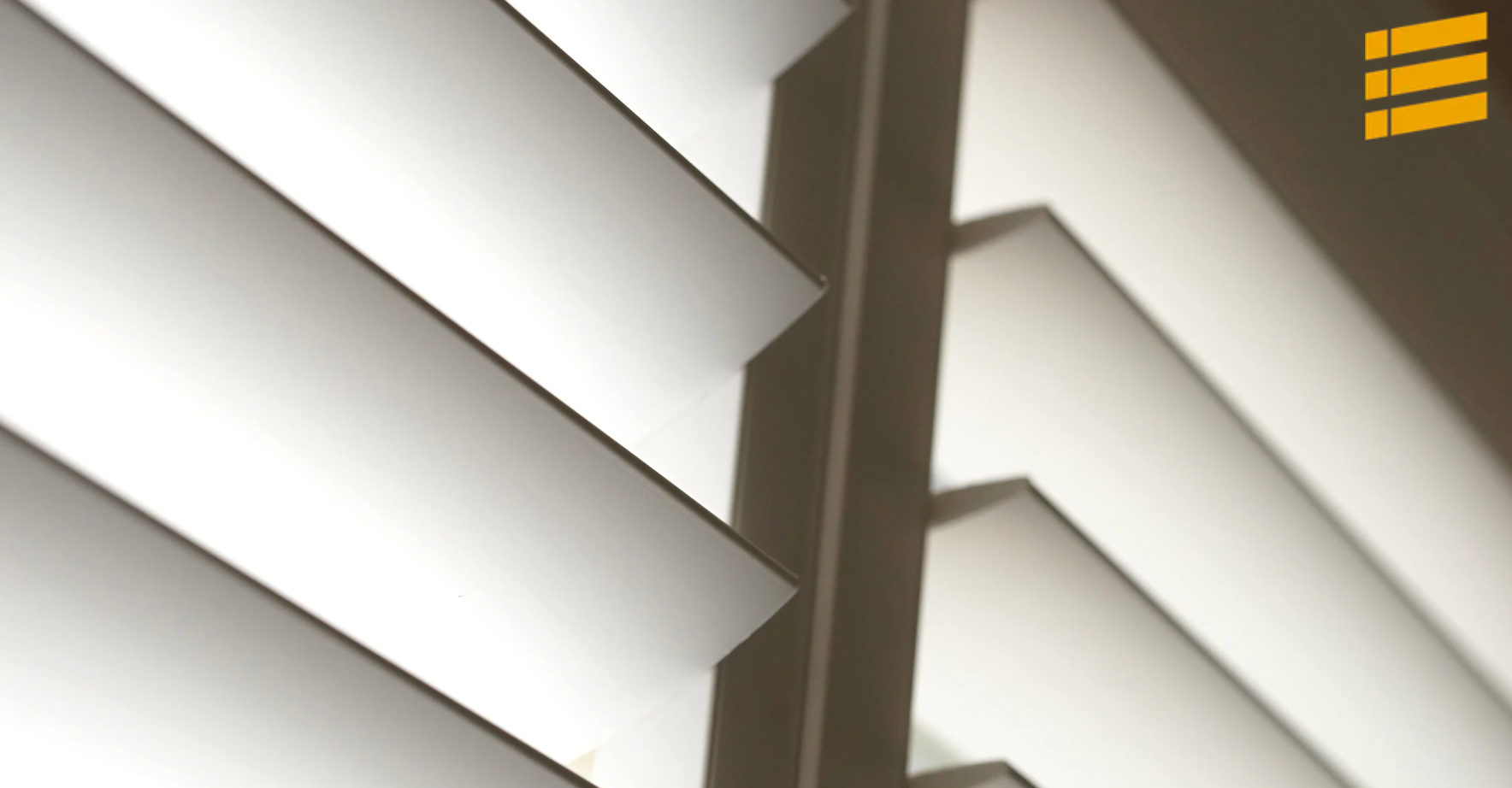
Share On: